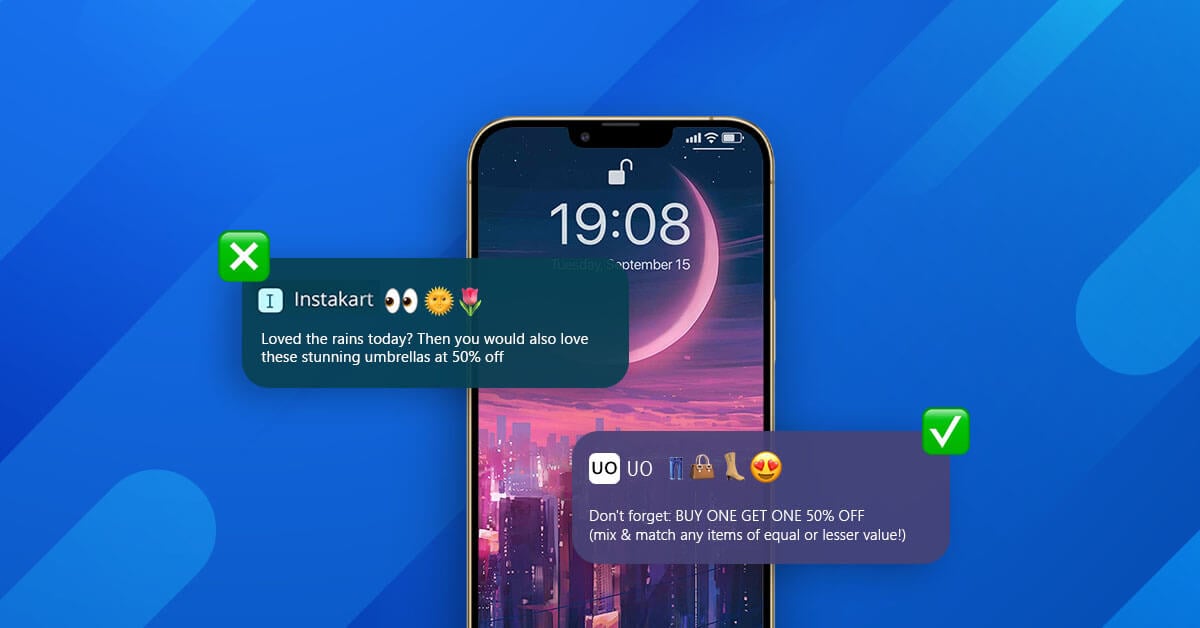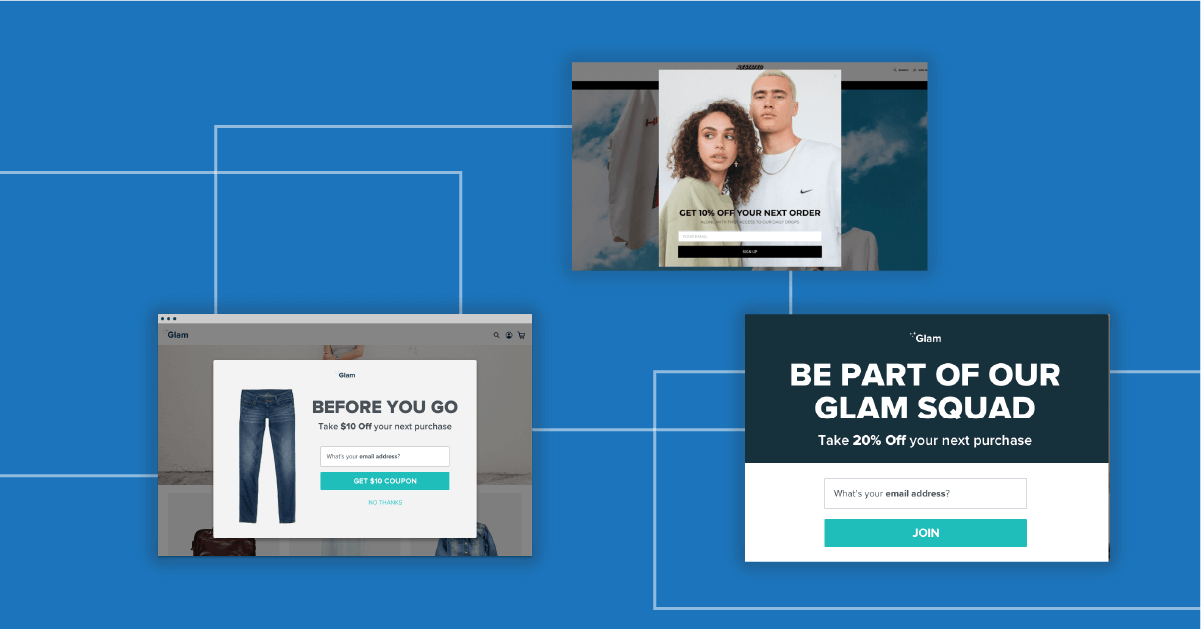Welcome to our comprehensive guide on effective web push notifications!
In this blog, we’ll explore the world of push notifications and how they can be leveraged to engage and delight your website visitors.
Whether you’re a seasoned marketer or a budding entrepreneur, understanding the power of push notifications can significantly enhance your online presence and customer interactions.
Origin of Web Push Notifications
To appreciate the impact of push notifications, let’s take a brief journey through their evolution. Here’s a timeline highlighting key milestones in the history of push notifications:
- 2009: Apple introduces push notifications in iOS 3, allowing developers to send real-time alerts to users even when apps are not in use.
- 2010: Google adopts push notifications in Android, enabling developers to engage with users beyond the app’s interface.
- 2013: Web push notifications emerge, empowering websites to send notifications directly to users’ desktop or mobile devices, even when they’re not actively browsing the site.
- 2015: Major web browsers, including Chrome, Firefox, and Safari, adopt support for web push notifications, leading to their widespread usage.
- 2017: Progressive Web Apps (PWAs) gain popularity, further enhancing the capabilities of web push notifications with offline functionality and app-like experiences.
- Present: Push notifications have become an integral part of digital marketing strategies, driving user engagement, increasing conversions, and delivering personalized experiences.
By understanding push notifications’ origins, we can understand their evolution from mobile-centric applications to the broader web ecosystem. This historical context sets the stage for exploring the best practices and strategies that make web push notifications effective.
In the next part of our guide, we’ll delve deeper into the benefits of using web push notifications and how they can positively impact your business. Stay tuned for valuable insights and actionable tips to optimize your push notification campaigns.
This is How Web Push Notifications Work
To understand how web push notifications function, let’s break down the mechanism behind them. When a user visits a website that supports push notifications and grants permission, the following steps occur:
- User Permission: The website requests permission from the user to send push notifications. If the user grants permission, their device is registered with the push service.
- Subscription: Once permission is granted, the user’s device subscribes to receive push notifications from the website. This subscription creates a unique endpoint or token that identifies the user and their device.
- Message Trigger: The server generates a push notification message when a specific event or action occurs on the website (e.g., a new article is published or a product is back in stock).
- Delivery to Push Service: The push notification message is sent to the push service associated with the user’s device.
- Delivery to Device: The push service delivers the notification to the user’s device, even if the website is not currently open in the browser.
- Display to User: The device’s operating system displays the push notification as a brief message or banner, often accompanied by a sound or vibration alert, grabbing the user’s attention.
- User Interaction: The user can then choose to interact with the push notification by tapping or clicking on it, leading them back to the website or performing a specific action within the notification itself.
In the next part of our guide, we’ll explore the best practices for creating engaging and effective push notification campaigns. We’ll discuss crafting compelling messages, segmenting your audience, and utilizing personalization to drive user engagement. Stay tuned for valuable insights on maximizing the potential of web push notifications!
What Makes for Engaging Web Push Notifications?
Here are some key elements to consider
Use Images
Incorporating images in your push notifications can significantly enhance their appeal. Visuals catch users’ attention and provide a glimpse of what they can expect by engaging with the notification. Whether it’s a product photo, an enticing image, or an eye-catching graphic, visuals can help increase click-through rates and engagement.
Use Short, Lucid Content
Keep your push notification content concise and to the point. Users often glance at notifications, so it’s crucial to convey your message in a clear and compelling manner. Craft succinct copy that grabs attention, creates curiosity, and encourages users to take action.
Use Personalized Content
Personalization is key to delivering relevant and meaningful notifications. Leverage user data, such as their browsing history, preferences, or location, to tailor the content of your push notifications. Personalization adds a personal touch, making users feel valued and increasing the likelihood of engagement.
Use Clear, Compelling CTAs
Call-to-action (CTA) buttons guide users towards the desired action. Make your CTAs clear, actionable, and compelling. Use action verbs and create a sense of urgency or exclusivity. For example, “Shop Now,” “Claim Your Discount,” or “Read More” can entice users to click and explore further.
Remember, each push notification should offer value and relevance to the user. Avoid generic or spammy messages that might lead to opt-outs or negatively impact your brand reputation.
Push Notifications: Best Practices
To achieve maximum campaign yield with push notifications, it’s essential to consider UX, design, and placement strategies tailored to various devices. Implementing the following hacks can significantly enhance the effectiveness of your push notification campaigns:
Responsive Design
Ensure your push notifications are designed with a responsive approach, adapting seamlessly to different screen sizes and resolutions. Optimize visuals, text, and CTAs to ensure readability and functionality across desktops, mobile devices, and tablets. This guarantees a consistent and user-friendly experience, regardless of the device users use.
Eye-Catching Visuals
Grab users’ attention using visually compelling graphics, icons, or images within your push notifications. Well-designed visuals can pique interest, increase engagement, and encourage clicks. Ensure the visuals are relevant to your message and resonate with your target audience.
Concise and Engaging Copy
Craft concise and engaging copy that quickly communicates the value and purpose of your push notification. Use persuasive language, action-oriented words, and clear CTAs to prompt users to take the desired action. Keep the text succinct, ensuring it is easily digestible on different device screens.
Strategic Placement
Strategically place your push notifications to optimize visibility and engagement. Consider factors like device-specific notification display areas, such as the top bar, lock screen, or notification center. Experiment with placement options to find the most effective position that captures users’ attention without being intrusive.
Personalization and Segmentation
Leverage user data to personalize and segment your push notifications. Tailor the content, visuals, and CTAs based on users’ preferences, behaviors, or demographics. This targeted approach enhances relevance and increases the likelihood of clicks and conversions.
By focusing on UX, design, and placement considerations specific to different devices, you can maximize the impact and yield of your push notification campaigns. Strive for seamless user experiences, visually appealing designs, and personalized content to drive engagement and achieve your campaign objectives.
Why Do You Need to Use Browser Push Notifications Now?
Push notifications offer a range of benefits for businesses looking to engage with their audience effectively. Let’s explore some key advantages of utilizing push notifications in your marketing strategy:
Easy to Set Up
Implementing push notifications is relatively straightforward. With the right tools and platforms, you can quickly integrate push notification functionality into your website or web application. The setup process typically involves minimal technical expertise, making it accessible to businesses of all sizes.
Cuts the Need for a Dedicated App
Unlike traditional mobile apps that require users to download and install them, push notifications can be triggered directly from a web browser. This eliminates the need for users to install a dedicated app, expanding your reach and engagement potential. Users can receive updates and alerts from your website, even if they haven’t installed your app.
High Message Dissipation Rate
Push notifications have a high message dissipation rate, meaning they are more likely to be seen and read than other communication channels like emails. Notifications appear prominently on users’ devices, catching their attention and encouraging immediate interaction. This instant visibility increases the chances of users engaging with your messages promptly.
Personalized 1:1 Targeting
Push notifications enable personalized 1:1 targeting, allowing you to deliver tailored messages to individual users based on their preferences, behaviors, or demographics. By leveraging user data, you can create highly relevant and personalized notifications that resonate with your audience. This level of customization enhances user engagement and drives higher conversion rates.
Increased User Engagement and Retention
Push notifications are an effective tool for boosting user engagement and retention. You can keep users informed about new content, updates, promotions, or events by delivering timely and relevant notifications. Regular interaction with your audience through push notifications fosters a sense of loyalty and keeps them connected to your brand.
You can leverage these advantages to enhance user engagement, retention, and overall marketing effectiveness.
Closing Note
In the fast-paced digital world, push notifications have emerged as a powerful tool for engaging with your audience. From their easy setup to personalized targeting, push notifications offer a range of benefits. So, why wait? Take your push notification campaigns to the next level with Wigzo’s marketing automation and customer data platform.
Book a free demo today and unlock the potential of successful push notification campaigns. It’s time to captivate, convert, and conquer with Wigzo!













